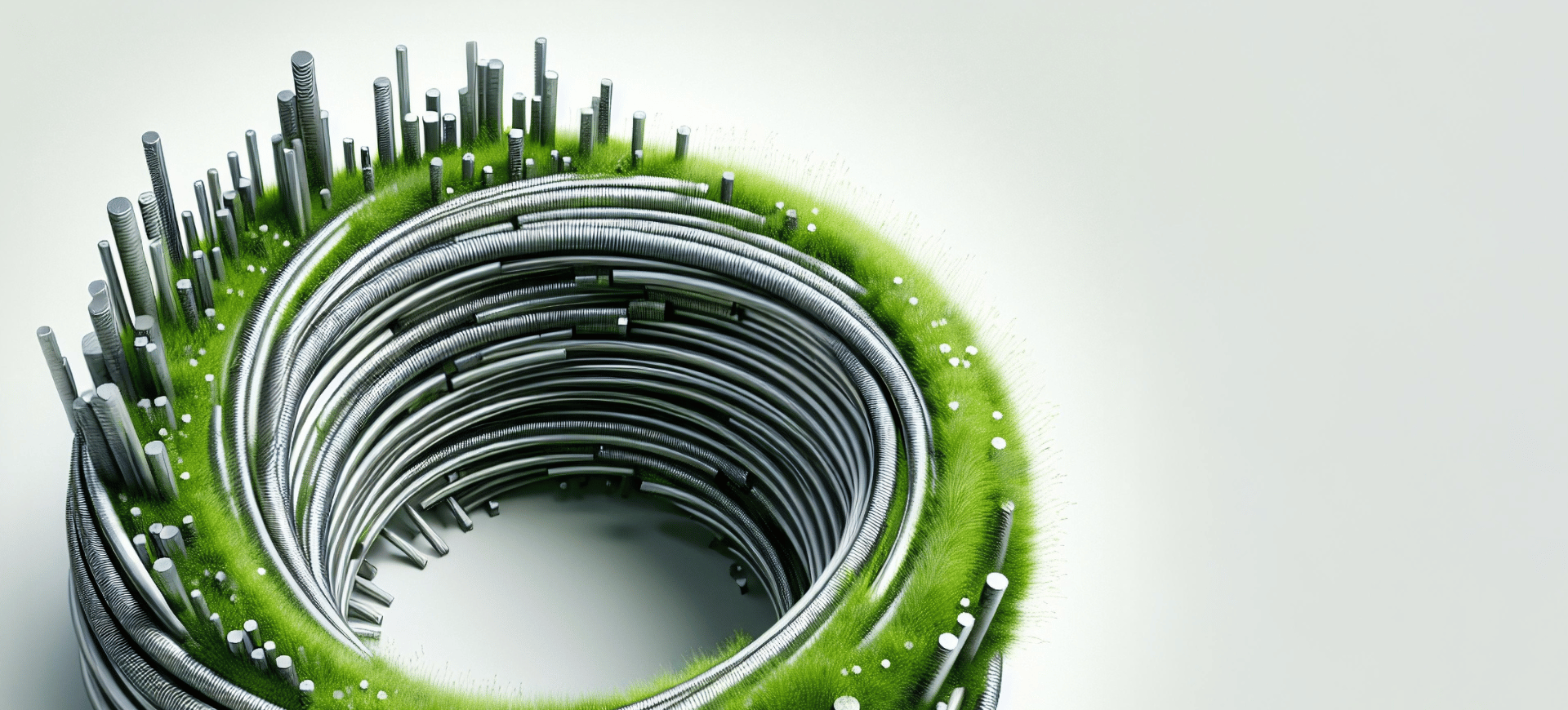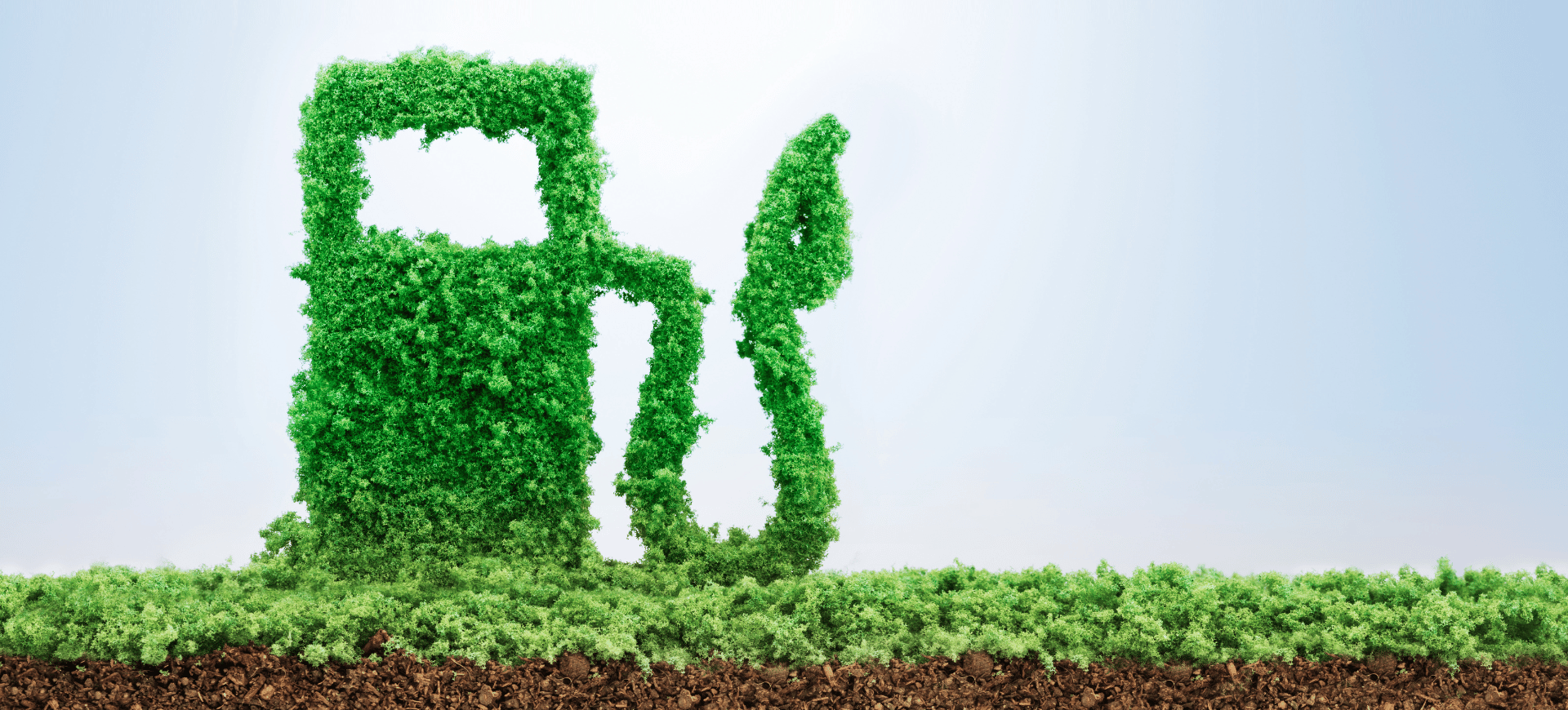Promoting a Circular Economy in the US Renewable Energy Sector
Renewable Energy Waste Challenges
While China leads wind energy production, producing three times more than the US, they had, until recently, also been absorbing global waste. In 2018, China’s “National Sword” policy halted the import of global plastics and other materials destined for its recycling processors. The US, second place in wind energy, is now scrambling to find new ways to dispose of its turbine waste.
Glass and fiberglass recycling has had trouble creating a sustainable post-consumer-based profit model due to impurities that cannot be easily eliminated for re-use. New research in polymerization allows the consideration of new plastic, glass and fiberglass waste streams, even as planting substrates.
Despite having appointed fossil fuel executive Chris Wright – a climate change sceptic who criticises zero-emission targets and actively opposes the transition to renewable energy – as secretary for the Department of Energy, President Elect Donald Trump has spoken (on the Joe Rogan podcast) about the amount of waste produced by the wind industry in the US. While the majority of his remarks focused on the negative effects of the vibrations emitted by wind turbines on marine life (“I’d love to be a whale psychologist”), he has since vowed to ‘end’ offshore wind.
He claims it is the most expensive and least environmentally friendly source to develop, opposing the Inflation Reduction Act which allowed billions to be invested into the green transition and meeting the requirements of the Paris Agreement.
While Trump might be guided by market logic rather than a real concern for the environment, it remains essential to the circular economy to incentivise the proper waste management since, more than anything else, it is consuming valuable space on US soil.
The Life of a US Wind Turbine
First generation wind farms installed as early as the 1990s – after having exhausted the refurbishment cycle – face three potential endings for wind turbine blades, once the metal parts have been extracted: repurposing, recycling or landfill. As a result, blades account for most unrecycled wind turbine materials. Turbine blades are partially composed of fiber-reinforced polymer (FRP) materials (glass and carbon fibers, epoxy resin), making conventional recycling complex, costly and potentially hazardous.
Up to 86% of total lifecycle emissions for wind power comes from raw materials extraction and turbine manufacturing, while the remaining 14% comes from transportation, installation, operation and maintenance, decommissioning and disposal.
The average turbine height has more than doubled over the last 20 years and continues to increase. While this makes power generation more efficient, indirect emissions are impacted. While there are solutions currently available, costs will need to come down significantly to make these approaches to recycling commercially viable.
Meanwhile, decommissioned capacity is set to increase six-fold between 2020 and 2030: 1.2 million blades will be disposed of in the US by 2050, while 72,000 utility-scale turbines were installed. The estimated cost of disposal by 2050 is US$25 billion. The decommissioning of turbines is the renewable energy industry’s primary and most significant waste stream. After twenty-five years, blades are sometimes shredded and used as filling in cement or burned, but they are most often buried in landfills. This has remained the most affordable and convenient option. Consequently, by 2050, there will be more than 40 million tons of landfill waste from wind turbine blades.
Wind turbine blades entering the waste stream over the next 20 years will come predominantly from turbines already in operation. The U.S. Wind Turbine Database (USWTDB) provides a comprehensive list of nationwide turbines. As of April 2020, 63,794 turbines, ranging in capacity from 50 kW up to 6 MW, were installed between 1981 and 2020. An estimated 400,000 tons of turbine blades may be decommissioned annually by 2030 , with this figure projected to double to 800,000 tons by 2050.
Blade decommissioning trends reflect the chronological development of wind energy, beginning in Europe and later expanding to regions like the United States and China. Due to this, early research on blade waste has been Europe-focused. Variations in regional policies and waste management practices underscore the need to develop and evaluate blade waste strategies tailored to the U.S. context.
The adaptive reuse of decommissioned turbines is highly commercially viable due to existing and evolving ESG reporting requirements, the growth of green finance like green bonds and environmental impact bonds, and changing national legislation. Wind farms in the US can now pay up to $40,000 for the disposal of wind turbine blades. The sheer size and quantity of blades make disposal not only a loss of high-quality materials but also take up considerable space, which is economically and environmentally unsustainable.
Decommissioning costs for a single turbine can range from $114,000 to $195,000, and disassembly and removal can take 6-24 months due to high-skill labour.
Renewable energy loses its promise of sustainability if these blade carcasses fill graveyards, rather than be repurposed to address other environmental challenges.
However, glass recycling is a well-established industry, making solar panels – of which 75% is glass – easily recyclable, and the silicone and precious metals can be separated and refined via chemical and electrical processes. The recycling of solar is highly profitable and is expected to grow from $170 million in 2022 to $2.7 billion in 2030 and $80 billion in 2050 with companies like SOLARCYCLE partnering with solar providers to show us how 95% of materials can be re-integrated into the supply chain.
Circular Economy Solutions
Veolia is a processing plant in Missouri which shreds turbine blades. This mechanical method can recover more than 90% of the weight of the blades: 65% in the form of a raw material, replacing sand, clay and other materials, and 28% as an alternative fuel, replacing coal to provide the energy needed for the chemical reaction in the cement kiln .
Cement produced this way has exactly the same properties as traditional cement. This process, however, jeopardizes the main qualities of the fiberglass, which is not cost-effective, as the energy expended impacts material quality. Moreover, while alternative fuel is more efficient than burning coal, cement manufacturing still contributes 8% to gas emissions.
Tennessee—based Carbon Rivers has developed and commercialized technologies such as second-generation polymer composites, providing end of life recycle and upcycle processes for turbine blades. Currently, they recover clean mechanically intact glass fiber.
But what about other cost-effective reuse projects which don’t put materials through chemical or mechanical processes, or which adapt the turbines’ defined form?
Global and Regional Perspectives
Legislation in the EU may act as a model for promoting circular economy initiatives in the green technology supply chain. The EU has long understood downstream waste-stream reduction. WindEurope called for an EU-wide ban on landfilling turbines, creating cross-industry collaborations in 2020, and this acted as a ‘key driver of post-COVID-19 economic recovery’ .
The main technologies for recycling composite waste in the EU are through cement co-processing such as the type of mechanical processing, which involves transforming blades into a raw material.
Legislative developments across several states reflect a widespread recognition of the need for responsible waste management strategies for wind farms. In Ohio, for example, Law SB 52 mandates that local authorities play a more significant role in the approval of wind project bids, requiring developers to submit detailed decommissioning plans prior to construction. Plans must outline estimated costs, responsible parties, relevant timelines and financial assurances ensuring that funds are available when needed. The same improvements and mandates to renewable energy facilities are applicable to developers in California, South Dakota, Oklahoma, Minnesota, Maine and Iowa.












